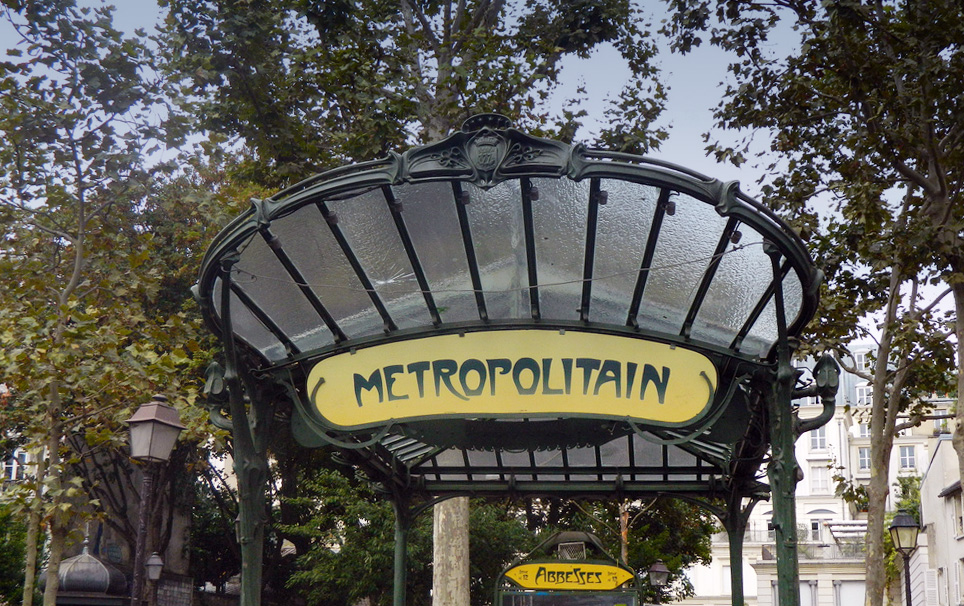
Entrance to the Abbesses Métro station in Paris. Photo © Ruben Holthuijsen, licensed Creative Commons Attribution.
Even at its packed-in-like-sardines worst, the Paris Métro is still a life enhancer for commuters in the City of Light. Extensive, fast, relatively affordable, and generally safe, it gets you where you want to go—and you just feel so Parisian getting there. For visitors, the best Métro ticketing option is the €12 carnet of 10 tickets. They have no expiration date and are also valid for bus travel. For those staying longer than a few weeks who expect to use the system regularly, a Navigo pass is a more cost-effective option. The Navigo is sort of like a credit card, only with your photo on it. Register online, wait for your card to arrive in the mail, then add money to it using automated kiosks inside the station. Other French cities besides Paris have Métro systems—Toulouse, Marseille, and Lyon, to name a few—and essentially they all work the same way.Other French cities besides Paris have Métro systems—Toulouse, Marseille, and Lyon, to name a few—and essentially they all work the same way. After entering the station by sliding your pass over the sensor or inserting your ticket, you follow the signs pointing to the final destination on your line. For instance, if you’re traveling from the Louvre to Gare de Lyon, you’ll take the train marked “Château de Vincennes,” since Château de Vincennes is the last stop in that direction on that line. Hop on a train going the wrong direction? No problem. Disembark at the next station and cross over to the opposite platform to redirect yourself without having to purchase another ticket or exit the station.
When your train pulls up to the platform, stand clear of the doors to allow passengers to exit. You’ll often see people exiting the train and standing near the doors; they’re just getting out of the way temporarily to make the disembarking process easier for others. Once everyone is off, it’s your turn to pile in. A buzzer will sound when the doors are about to close, usually giving you about five seconds to get moving. Once you’re on the train, assess the situation—if it’s packed, don’t try to pull down and sit on the folding seats near the door. Instead, stand like everyone else. Though it’s not mandatory, it’s always nice to give up your seat to pregnant women, parents with small children, and the elderly, for which you’ll be rewarded with that rare treasure: a smile from a French stranger.
Excerpted from the Second Edition of Moon Living Abroad in France.